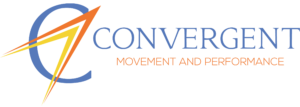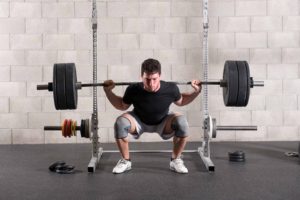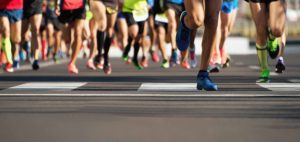How to Design Your Fitness Training Session

Whew!
The time has finally come to discuss how best to design your training session for optimal results.
But first, let me congratulate and commend you on making it this far in the Convergent Path to Performance. We covered an enormous amount of information, and your dedication to remaining on track is inspirational.
Without further ado, let’s discuss the primary considerations for designing an effective fitness training session.
Did you allow for sufficient recovery?
The very first thing that I ask you to consider before each session is whether or not you have allowed for sufficient recovery and restoration prior to engaging in additional training.
Please recall the process by which your body adapts to stressors such as training.
By performing an optimal stressor at the ideal point of recovery, you will be able to set the stage for a Eustress and resistance to a previous stressor. This will ultimately lead you to steady enhancement in your performance.
On the other hand, you will simply be promoting distress, exhaustion, and potential injury if you engage in training prior to sufficient recovery.
What is your CURRENT ability level?
As soon as you determine that you are sufficiently recovered and ready to introduce new stressors through a training session, you must identify exactly what your current ability levels are. After all, optimal training for performance enhancement is centered around a clear understanding of what your CURRENT performance is.
Remember that there is a “sweet spot” that each exercise and activity in your training program must fall within to be effective.
A stress and adaption response will not be initiated if the exercise or activity does not provide enough stimulus or difficulty, therefore closing the door to any progress or training effect. (Not enough stimulus/difficulty = no stress = no adaptation or progress)
The body will however perceive a challenge and produce a Eustress if the exercise or activity provides an ideal stimulus and is appropriately difficult. This will lead to adaptation and a resistance to the previous stressor resulting in performance enhancement. (Ideal stimulus/difficulty = challenge = Eustress, adaptation, and resistance to the previous stressor)
On the other hand, the body will perceive an exercise or activity that is too difficult as being a threat, and will therefore produce distress, exhaustion, and potential injury. (Too much stimulus or difficulty = threat = distress, exhaustion, and potential injury)
What are your goals for the session?
Consider goals to serve as your desired destination point on any path you take. One sure-fire way to experience lack-luster results is to ‘wander around without purpose’ during your training sessions.
This will undoubtedly happen without a destination point set by clear and concise goals.
Determine exactly what you hope to accomplish, and then work backwards from there when designing the structure of the session.
How will you organize your training session?
At this point, you have assured that you are sufficiently recovered. You’ve determined the starting point of where you are now with crystal clarity, as well as set the destination point of where you’re hoping to go and what you’re planning to accomplish.
Now let’s begin to discuss how best to organize the training session in order to create that optimal challenge without promoting distress.
Let me start by introducing you to the fact that we all possess 3 primary energy systems for physical activity:
1) Short-term energy system
2) Intermediate-term energy system
3) Long-term energy system
The short term energy system relies on immediate (ex: ATP) and very rapid (ex: Creatine Phosphate) energy sources in order to fuel high intensity and short duration activities spanning approximately 20-30 seconds in duration.
The intermediate term energy system relies on sugar as its primary energy source, and fuels medium intensity and medium duration activities spanning approximately 30 seconds – 2 or 3 minutes.
Finally, the long term energy system relies on oxygen through the breakdown of fat as the primary energy source, which fuels low intensity and high duration activities spanning greater than 3 minutes.
In reality, at least 2 of the energy systems have some level of involvement at any given intensity or duration, however the previous description focused on the DOMINANT energy system for each category of intensity and duration.
So why is this information important for you?
Longer duration activities have a GREATER potential to tap into and use the energy sources used for shorter duration activities. This is in contrast to the opposite, where shorter duration activities do NOT have AS GREAT of a potential to tap into energy sources used for longer duration activities.
Therefore, the order in which you perform each aspect of fitness within each training session is absolutely crucial to ensure that you avoid prematurely depleting your sources of energy for subsequent within-session training.
To further clarify:
- Speed work relies on the short-term energy system
- Strength work relies on the intermediate-term energy system
- Endurance work relies on the long-term energy system
If you were to perform endurance training directly prior to speed training, then the endurance training may deplete the energy sources upon which speed training relies. This may worsen, or even prevent, the intended training effect of your speed work.
So for optimal results, plan your training session with the following order:
Warm up > Movement quality/skill work > Speed > Strength > Endurance > Cool down and recovery
How Long Should Your Training Session Be?
Attempt to maintain your training sessions under 1 hour if you are a beginner or intermediate. Excessively long training sessions will only lead to greater distress and exhaustion.
Keep in mind that you do not need to include ALL aspects of fitness within each session. Each session should ideally include a warm up, movement quality/skill work, and cool down and recovery.
In regards to speed, strength, and endurance; all 3 may be performed in one session, or you may choose to only perform 1 or 2 per session.
Also, remember to reference the previous articles on strength, endurance, and speed training in order to determine how frequently each are recommended to be trained per week, and at what intensity, what repetition and set range, and with what rest intervals.
Now that you understand which factors must be considered when planning your optimal training session, it’s time to action!
TAKE ACTION!
- Review and consider the previously mentioned questions within this article. Make sure you are sufficiently recovered and ready to train, understand your current ability levels, know your goals, and are ready to begin planning your session.
- Begin each session with an appropriate general warm-up designed to increase body temperature and blood flow.
- After completing your general warm up, shift your focus onto improving movement quality by utilizing exercises and other available methods to improve pain free flexibility, mobility, stability, motor control, and technique.
- Once you have sufficiently warmed up and worked on your movement quality, you may transition to exercises focusing on speed development by following the provided guidelines. Keep in mind that speed training is not always appropriate for every individual and training goal. If speed is not something you wish to emphasize, you may move onto the next step.
- Begin the strength training aspect of your program after movement quality and potentially speed work by following the provided guidelines.
- Begin the endurance training aspect of your program after movement quality and potentially speed and strength work by following the provided guidelines.
- Make sure to end each session with an appropriate cool-down and recovery.
Summary
Designing an optimal fitness training session is a very individualized process that must take numerous factors into consideration. Before heading to the gym, track, field, or court, make sure to ask yourself the following questions:
Did I allow for sufficient recovery?
What is my CURRENT ability level?
What are my goals for the session?
How will I organize my training session?
How long should my training session be?

Dr. Eugene Ketselman PT, DPT, Cert. MDT, CSCS
Dr. Eugene Ketselman is a licensed Physical Therapist, Certified Strength and Conditioning Specialist, Performance Coach, and owner of Convergent Movement and Performance; Home of where Physical Therapy, fitness, and performance training converge! Dr. Ketselman's mission is to help motivated athletes and active adults excel in their passions by maximizing physical performance and reducing setbacks from pain and injury.
Here at Convergent Movement and Performance, we practice what we preach. You know we are a good match for one another as soon as you find yourself relating to the content we provide. Be sure to click below to learn more.
Do you have specific questions that aren’t answered on this website?
Click below
Does pain, weakness, or exhaustion prevent you from reaching your FULL potential while performing the activities you love?
Click below
Do you love what you’re seeing, but still aren’t sure if you can make the commitment?
Click below
Contact Us
Convergent Movement and Performance serves out of Northern – Central New Jersey, conveniently located to those that live, work, and travel in the nearby towns of Warren, Bridgewater, Martinsville, Watchung Hills, Bedminster, Basking Ridge, Bernardsville, Chatham, Westfield, and Piscataway within Somerset, Morris, Union, and Middlesex counties, NJ.



